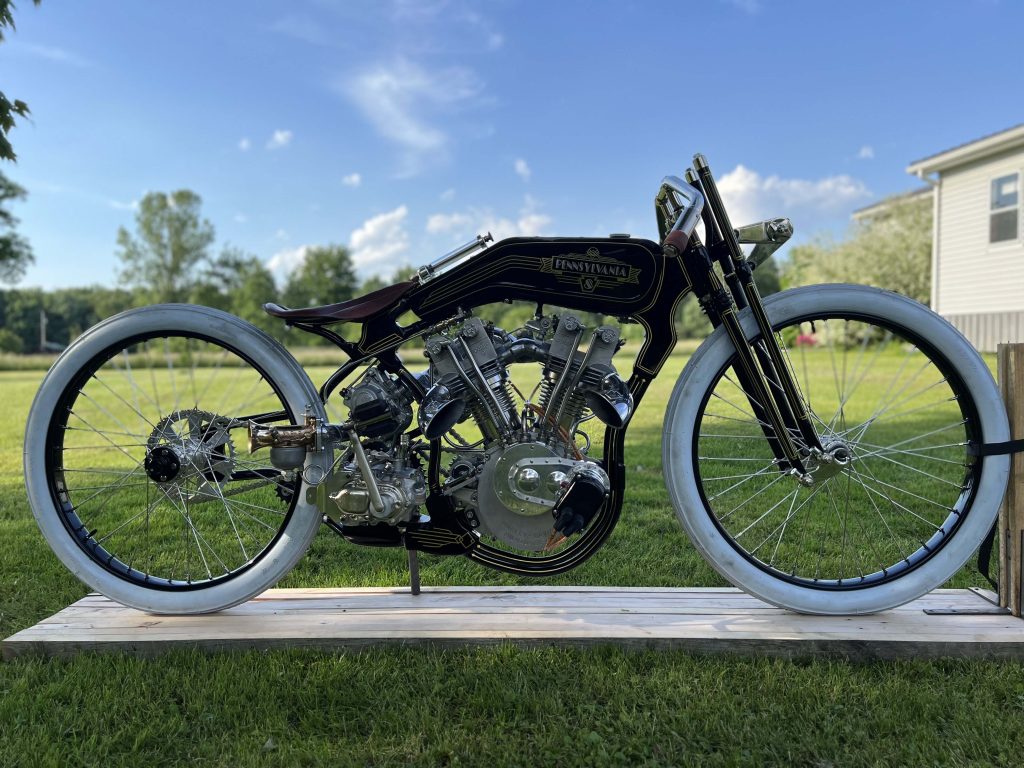Competition Distributing LLC, a Pennsylvania-based manufacturer of antique Harley-Davidson and Indian motorcycle components, is using metal 3D printing to reproduce rare, century-old parts that are no longer available through conventional means. With a focus on pre-1930s motorcycles, the company supplies both original and precision aftermarket components to global collectors, museums, and restorers. To meet increasing demand and overcome the scarcity of critical components, the company adopted laser powder bed fusion (LPBF) technology, bringing metal additive manufacturing in-house with support from industrial 3D printer supplier Farsoon Technologies.
“Some of these bikes are over 100 years old and too valuable to ride—even if museums let you take them out,” said Sean Jackson, Head of Operations. Faced with vanishing inventories of original castings, Jackson and co-founder Kevin began scanning parts and recreating them using Farsoon Technologies FS200M-2, a dual-laser metal 3D printing system designed for medium-format production. “These parts aren’t just for museum bikes,” Jackson said. “We want to make them accessible to the average enthusiast who wants to build, ride, and experience early motorcycles like they did 100 years ago.”
Competition Distributing had prior experience with polymer-based additive manufacturing, but initially outsourced its metal 3D printing. According to Jackson, LPBF proved significantly faster and more flexible than conventional mold-making and foundry methods, which can take months. This operational advantage led to their decision to bring metal printing capabilities in-house.
The FS200M system, installed in October 2024, has remained in near-constant operation since. Jackson described the adoption as a turning point. “With it, we can now deliver high-quality, end-use parts in days instead of months—and most importantly, our customers love the results.” In particular, the system has enabled production of rare frame components and cast elements that are difficult to source or replicate. One example includes a cylinder head iteration based on a 1928 Rudge Cycle Co. design, 3D printed using aluminum alloy AlSi10Mg. Another project, “The Pennsylvania 8,” integrates 3D printed parts into a fully restored motorcycle.

Applications and Technical Adaptation
Jackson explained that the company primarily prints with 316 stainless steel for structural components but is preparing to expand into aluminum, 17-4 stainless steel, and titanium. These material options will support a wider range of restorations, especially for load-bearing or high-performance parts.
Implementing the technology involved a learning curve. “It took about three to four weeks of continuous printing to really dial in our process,” Jackson said. Unlike AM-optimized geometries, many of the scanned vintage components lack symmetry or internal supports. Adapting the support structures and print settings for such irregular geometries required fine-tuning.
Support from Farsoon’s technical team was described as crucial to the successful integration. “Our team is made up of engineers and mechanics, so communication with Farsoon’s technical team has been very efficient,” Jackson noted. He highlighted the assistance of two technicians, Drew and Ty, for their responsiveness during the ramp-up period.
Jackson also credited the integrated software for enhancing process control and reducing downtime. Farsoon’s monitoring tools allow remote access and job management. “I can monitor and control prints remotely from my phone, adjust powder settings, and even remove individual parts from a build without canceling the entire job,” he said. This functionality has reduced material waste and improved operational flexibility.

A restored vintage motorcycle featuring 3D printed components was exhibited at Farsoon’s booth during Rapid + TCT 2025 in Detroit. The Competition Distributing team was present to answer questions and discuss the role of additive manufacturing in reviving century-old engineering.
Ready to discover who won the 2024 3D Printing Industry Awards?
Subscribe to the 3D Printing Industry newsletter to stay updated with the latest news and insights.
Featured image showcase the Pennsylvania 8” motorcycle. Photo via Competition Distributing / Farsoon Technologies.
